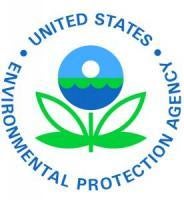Today, the U.S. Environmental Protection Agency (EPA) will recognize seven groups and individuals for their innovative work on clean air and climate projects. The 2016 Clean Air Excellence Awards are given to state, local, tribal, and private sector programs in five categories of activity that improve air quality, including technology development, public education, and transportation.
“Each of these award winners has taken real, tangible steps to improve public health in their communities by reducing air pollutants or greenhouse gases,” said Janet McCabe, acting assistant administrator for EPA’s Office of Air and Radiation. “These projects reflect the creativity and commitment of public and private sector organizations to make a difference and drive us toward a cleaner, healthier future.”
This year’s winners include:
Clean Air Technology Award: Georgia Ports Authority (Savannah, Ga.) – Electric Rubber Tire Gantry Cranes. Georgia Ports Authority is implementing an electric rubber tire gantry (RTG) crane program that will transfer the entire RTG fleet to electric power, reducing diesel use by 95 percent. This is the first electric RTG installation at a port in North America.
Community Action Award: Santa Barbara County Air Pollution Control District (Santa Barbara, Calif.) – Protecting Blue Whales and Blue Skies. The Santa Barbara County Air Pollution Control District established a voluntary vessel speed reduction program for ships coming to and from the Ports of Los Angeles and Long Beach to reduce fuel use, and to lower the risk of ship strikes on endangered whales. By reducing ships down to 12 knots, they reduced more than 500 metric tons of greenhouse gas emissions, as well as 12 tons of ozone-forming nitrogen oxide emissions, and no whales were hit by these ships.
Education and Outreach Award: Smartpower of Washington, DC, and National Grid of Rhode Island for the Rhode Island Energy Challenge: Find Your Four! Smartpower worked with National Grid to encourage customers across Rhode Island to ‘find four’ simple energy reductions they can undertake in their homes or businesses. Consumer knowledge on the need to reduce energy consumption and associating greenhouse gas emissions greatly increased, with 90 percent of participating homeowners taking at least one energy reduction effort, and 75 percent of participating homeowners indicating improved understanding of their energy use.
Regulatory and Policy Innovations Award: Southern Ute Indian Tribe Air Quality Program (Ignacio, Colo.) - Implementation of a Clean Air Act Title V Operating Permit Program. The Southern Ute Tribe has begun fully implementing a Title V operating air quality program (AQP), taking over 33 permits from the EPA and conducting 27 of their own permit inspections since 2014. So far, this is the first and only approved Title V air quality permit program in Indian country, setting an example for other Tribes to implement more sustainable air quality programs.
Regulatory and Policy Innovations Award: Great Basin Unified Air Pollution Control District (Bishop, Calif.) – Owens Lake PM10. The project involves pollution control of the dried Owens Lake bed, which generated substantial emissions of PM10(particulate matter 10 microns in diameter or less). At 48.6 square miles, it is the largest PM10 emission control project in the world, and has led to annual air pollution reductions of 75,000 tons.
Transportation and Energy Innovations Award: University of California at Irvine (UC Irvine) Transportation Services (Irvine, Calif.) – Sustainable Transportation. UC Irvine Transportation Services has implemented a suite of sustainable transportation projects across campus. These projects have led to annual reductions of over 40.1 million vehicle miles traveled and 21,000 metric tons of greenhouse gas emissions.
Thomas W. Zosel Individual Achievement Award: Dr. John C. Wall is receiving this award for a career spent reducing commercial engine emissions. Among his accomplishments, Dr. Wall was involved in the development and implementation of technology leading to near-zero levels of emission of particulate matter and nitrogen oxide from both on and off-highway heavy-duty engines.
The Clean Air Excellence awards program was established in 2000 by EPA’s Clean Air Act Advisory Committee, and recognizes individuals and organizations that serve as pioneers in their fields, advance public understanding of air pollution and improve air quality. Entries are judged by the EPA and the Clean Air Act Advisory Committee, and winners will be recognized later today at an awards ceremony in Washington, D.C.
More information on the award winners: https://www.epa.gov/caaac/clean-air-excellence-awards
You can read this article on the EPA website here.



 />i
/>i
